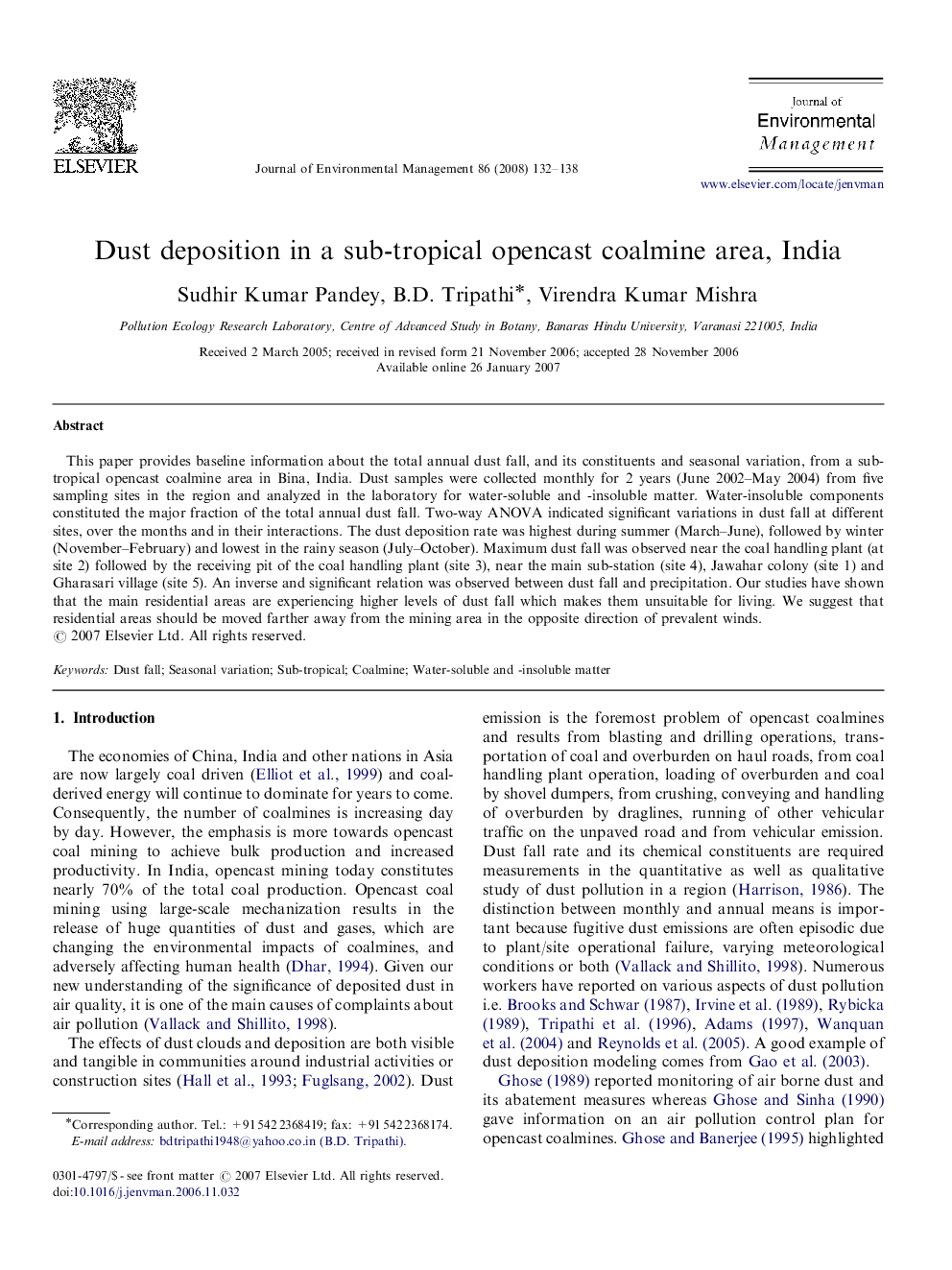| Article ID | Journal | Published Year | Pages | File Type |
|---|---|---|---|---|
| 1058369 | Journal of Environmental Management | 2008 | 7 Pages |
This paper provides baseline information about the total annual dust fall, and its constituents and seasonal variation, from a sub-tropical opencast coalmine area in Bina, India. Dust samples were collected monthly for 2 years (June 2002–May 2004) from five sampling sites in the region and analyzed in the laboratory for water-soluble and -insoluble matter. Water-insoluble components constituted the major fraction of the total annual dust fall. Two-way ANOVA indicated significant variations in dust fall at different sites, over the months and in their interactions. The dust deposition rate was highest during summer (March–June), followed by winter (November–February) and lowest in the rainy season (July–October). Maximum dust fall was observed near the coal handling plant (at site 2) followed by the receiving pit of the coal handling plant (site 3), near the main sub-station (site 4), Jawahar colony (site 1) and Gharasari village (site 5). An inverse and significant relation was observed between dust fall and precipitation. Our studies have shown that the main residential areas are experiencing higher levels of dust fall which makes them unsuitable for living. We suggest that residential areas should be moved farther away from the mining area in the opposite direction of prevalent winds.
